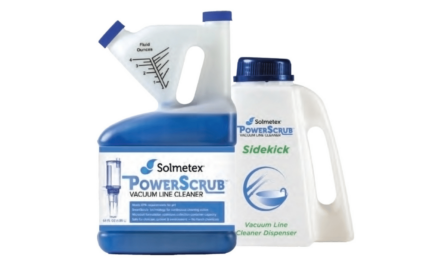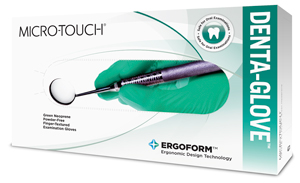Identifying and properly using Taxed Never investments
By Jared Thompson
Editor’s note: The following is part III in a series on understanding and effectively using Time-Tax Buckets
You can pay taxes now, later, and never. Proper use of this knowledge will transform the way your future investments look.
In the two most recent issues of Efficiency in Group Practice, we built the foundation for what could be considered a well-diversified method of accumulating assets in the most tax efficient manner. Dentists can implement these simple principles right away to help avoid shocking amounts of taxes and fees. To review, the three buckets dentist clients of PersonalCFO use to accumulate assets are the:
- Taxed Now Bucket
- Taxed Later Bucket
- Taxed Never Bucket
What if the least-funded bucket becomes the most valuable?
Most of the dentists we first begin to plan with have done a great job of filling the “Taxed Now” bucket, and usually an even better job filling the “Taxed Later” bucket. We love to see this kind of diligent saving, but is it enough to fully prepare you for retirement? Is your retirement really secure without using the “Taxed Never” bucket properly?
You’re likely saying, “Jared, I’m a highly compensated professional. Does this advice apply to me? Am I even eligible to save in this bucket?” With the correct knowledge and a bit of effort, you most certainly are.
Most docs may not be aware of what qualifies as a Taxed Never investment. To truly be a Taxed Never investment, it must meet several withdrawal or distribution tests:
- It must be exempt from income tax. Once eligible money has been placed into these types of savings accounts, the principal and any growth must not be taxed, regardless of one’s income tax bracket. The type of accounts used (discussed a bit later) may have age restrictions on when you can withdrawal from them, but some Taxed Never accounts don’t have any age restrictions.
- It must not negatively affect Social Security benefits. In retirement, when receiving Social Security benefits, did you know that all your income sources are tallied (including half of the Social Security benefit itself) and if the tallied income rises above a certain low threshold, up to 85 percent of your Social Security benefit can be taxed at your highest marginal tax rate?
Yes, you read correctly. Working part time, receiving a pension, taking too much from certain savings or retirement accounts during retirement can cut your Social Security benefits by more than one-third. The $2,500 you may have been expecting from Social Security each month may now only be $1,650.
- It must avoid distribution requirements at age 70 ½. If you’re fortunate enough to have a Taxed Never asset, the last thing you may want is to be forced to disburse your hard won funds at age 70 ½, or any other age. Only one of several Taxed Never accounts has this requirement, but it is totally avoidable … all you have to use is a simple strategy that we can teach you in a matter of minutes.
Taxed Never savings accounts
- Roth IRA. This is my favorite Taxed Never account. I help young doctors all over the country establish private Roth IRA accounts for themselves and their eligible spouses or partners while their income is still low. Opportunities still exist for more seasoned docs to use these accounts, as well. Limitations exist on income amounts, however.
For new money, called contributions, a doctor can only earn $181,000 (or $114,000 if single) before their eligibility begins to phase out. A total of $5,500 per eligible person can be added to their accounts each year if under 50 years of age. Or $6,500 if 50 or older.
For old money, called conversions from IRA to Roth accounts, a doctor can earn any amount of money and still use this strategy. This was not always the case, and it may not last for long, but while it does, it may make sense to start converting some of those IRA dollars. All you have to do is pay tax on the portion that you convert and then those dollars transform into funds that can grow uninhibited: the dollars and growth avoid all taxes for their lifetime.
- Roth 401(k) or Roth 403(b). If you’re lucky enough to have a retirement savings plan that allows you to take advantage of the Roth, use it. If it’s not available to you now, ask your plan administrator for it. A whopping $17,500 to $23,000 can be placed into a Roth 401(k) or Roth 403(b) each year, depending on your age. There are no income restrictions, either!
Often times, if you place money into these accounts you may receive a match from the company – your own or the company you work for. Although the match goes into the traditional portion of the plan, this is still a great incentive. If you placed 3 percent of your earnings into the plan and you receive a 100 percent match on that first 3 percent, this is a 100 percent rate of return on your contribution! Can the markets beat that?
- Non-Deductible IRAs that will be converted to Roth IRAs. For more seasoned or highly compensated doctors, this strategy may be worth a look. As long as you have earned income you are eligible to obtain a non-deductible IRA. There are no tax benefits to starting a non-deductible IRA (like the name implies, it is not deductible) but these accounts can be converted to Roth IRAs where only the potential gains are taxed upon conversion. PersonalCFO or most tax professionals can provide additional details.
- Permanent Life Insurance. Insurance is Taxed Never? It is if arranged properly. Our most savvy and sophisticated dentist professionals love this strategy. Finding otherwise wasted dollars and using them to buy a low amount of insurance may afford our docs an asset class unlike any other. Typically, there are no income limitations, no age restrictions, generous contribution maximums, no distribution requirements, and a wide range of investment options. Used in conjunction with a trust, it may also be possible to build and grow assets outside of your estate to shield you from creditors, attorneys and predators. With lawsuits on the rise, this strategy may bring some needed peace of mind.
There are many advisors and CPAs out there that don’t feel using Taxed Never accounts are necessary or worth it. Some even say, “It’s too late to start now!” Likely, this is a silly notion. True planning looks at the big picture and encompasses 20 to 30 years of perspective. Paying a little tax today to utilize these strategies may avoid major taxation tomorrow.
So now that we’ve covered your Taxed Now, Taxed Later, and Tax Never Buckets, you may be seeing the delicate balance that needs to exist between the various types of savings vehicles. It truly matters where you accumulate your assets, and more importantly, where you distribute them from in the future. Best of luck!
For questions, copies of our prior articles or for expanded information, please write Jared at: [email protected]
Any tax advice contained herein is of a general nature and is applicable for tax year 2014.
Please seek specific advice from your tax professional before pursuing any idea contemplated herein.
Securities offered through ValMark Securities, Inc. Member FINRA, SIPC
Investment Advisory Services offered through ValMark Advisers, Inc., a SEC Registered Investment Advisor
130 Springside Drive, Suite 300 Akron, OH 44333-2431* 1-800-765-5201
PersonalCFO, LLC is a separate entity from ValMark Securities Inc. & ValMark Advisers Inc.





